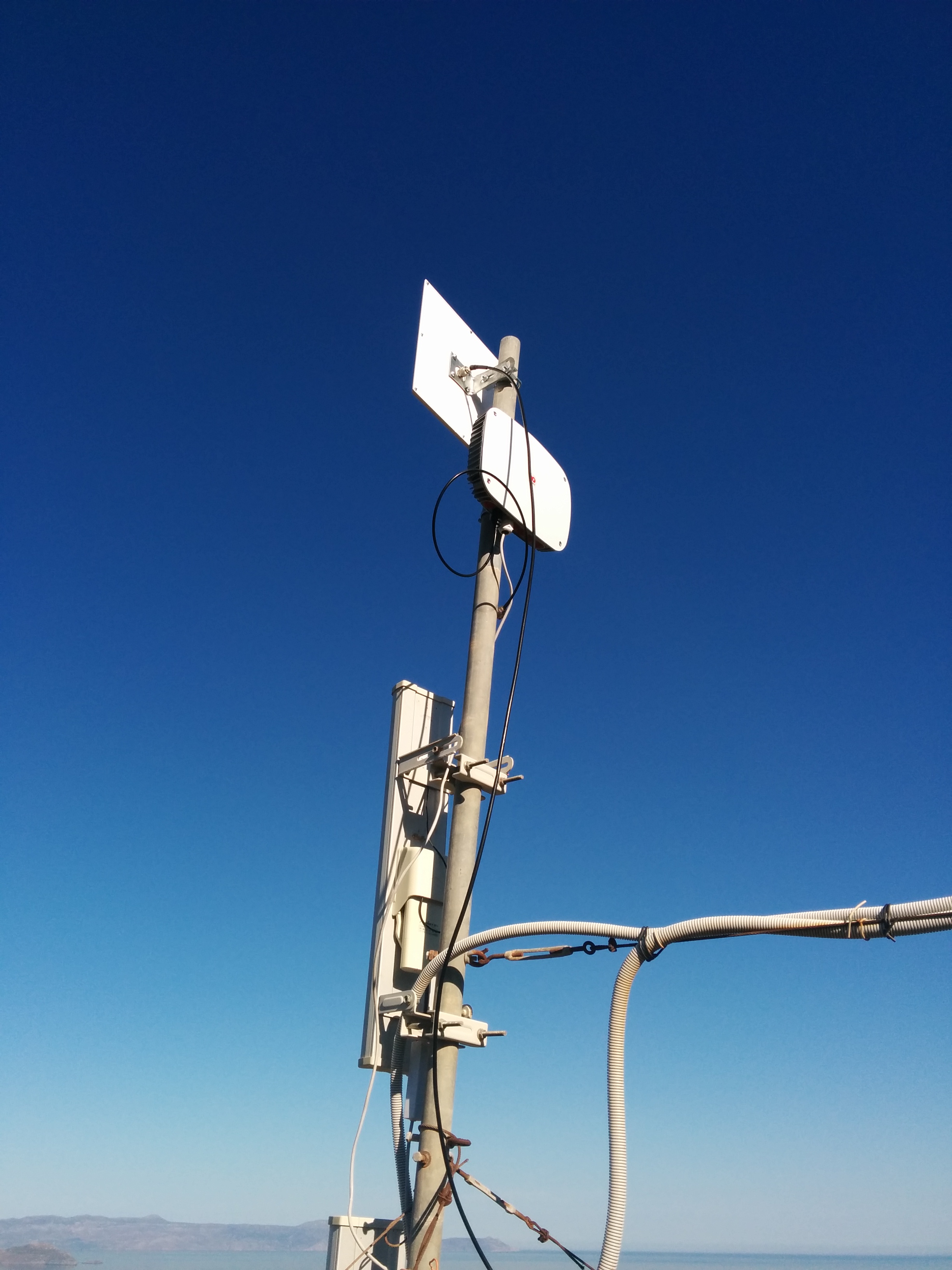1. Scatter Radio and Sensing
During my studies, I design and implement a scatter sensor network (i.e. transmission by means of signal reflection instead of active radiation). Working with an experimental setup consisting of a RF carrier emitter (battery aided MCU + active radio), a Software Defined Radio (SDR) receiver and 25 prototype semi-passive tags (battery aided MCU + RF transistor), I managed to encode and transmit real sensor data to the SDR receiver.
Complete scatter sensor nodes were designed and build in-house, in Telecom Lab. The nodes consist of three separate printed circuit boards: a scatter communication board, a power-board and a sensor board. The scatter comm. board consists of a Silabs C8051F930 MCU, a RF Transistor, an oscillating crystal. Pinouts for sensors and MCU programming are also on-board. Moreover, the power-board consists of a voltage source selection circuit, choosing between a solar panel and a coin battery. For the sensing part, a board containing multiple sensors (illuminance, temperature, plant electrical potential, soil moisture and air humidity) was constructed. The sensed data are encoded with a linear block code and are transmitted by means of reflection to a SDR receiver.
Processing of the received backscattered waveforms is done on a SDR platform using either USRP N200 or USRP E-100, on the hardware side (RF Front End & ADC) and C++ and Python for the signal pro- cessing, on the software side.
UPDATE: Scatter radio network Demo ready.
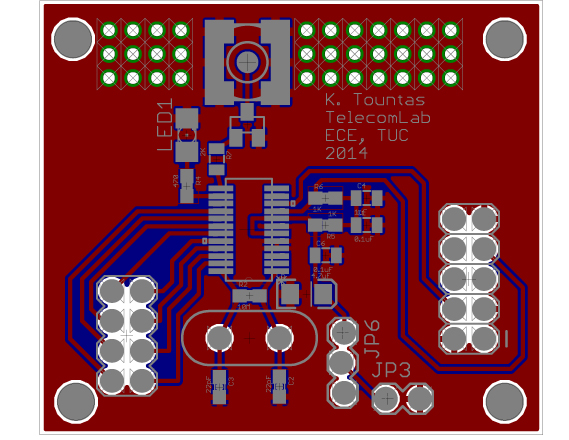
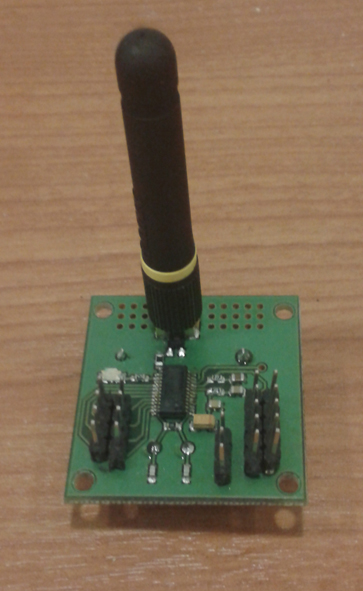
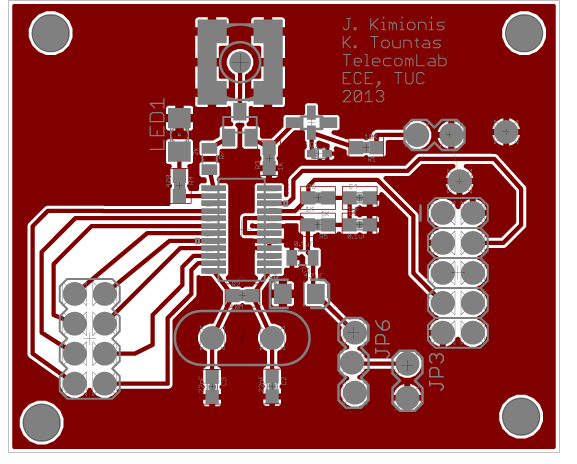
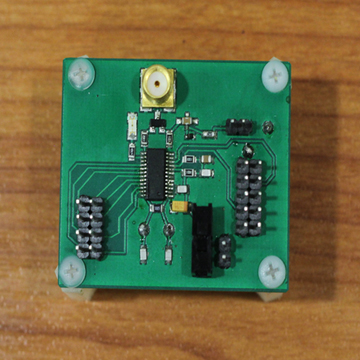
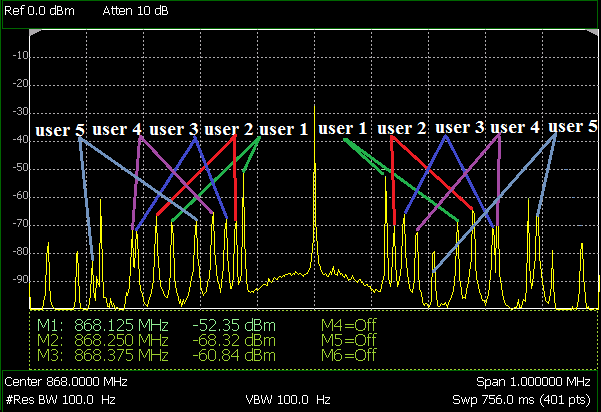
2. Software Defined Radio & WSNs
Experimentation on Software-Defined Radio (SDR) platforms to study various communication schemes. In particular, wireless sensor network nodes and SDR base stations. Various active radio modulation schemes of the iCubes (TI CC2500 transceiver) and Si1004 (Silabs Em- bedded Radio transceiver) are explored. The receivers consist of NI USRPs, on the hardware part and either C++ and Python or Matlab on the signal processing part.
Recent work includes constructing multi-user non-coherent backscatter FSK receiver on USRP N200 and E-100, utilizing the GNU-Radio framework and C++ & Python.
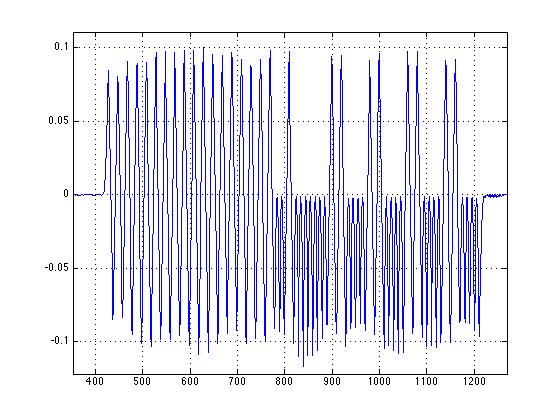
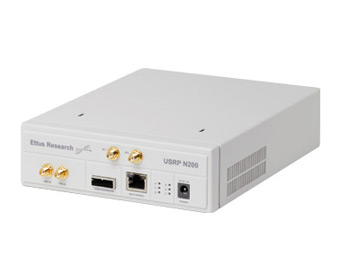
3. Wireless Link for The Municipal Water Supply Company of Chania
An 802.11s network was constructed for the Municipal Water Supply Company of Chania. Water tank level data from an already-installed sensor had to be transmitted wirelessly to the Company's facilities, as there was no infrastructure for current-loop cables installation. The maximum distance between the network nodes utilized was approximately 5.5 km.
The network consisted of 802.11s nodes transmitting the sensed data to the Municipal Water Supply Company of Chania. My contribution on this project was on the antenna measurement and alignment.
4. Simple "Analog" Sensor for Backscatter Sensor Networks
An ultra low-cost and low-power environment sensor has been built, that conveys humidity data to a central station through backscattering. The sensor is essentially a semipassive RF tag that employs only a simple timer circuit and passive components; i.e. no microcontroller unit (MCU) or other complex digital logic is utilized. In that way, the sensor is the backscatter modulator.
Exploitation of backscatter communication and simple electronics, instead of active radio architectures and complex control logic, reduces the energy requirements and manufacturing cost by one to two orders of magnitude. The design offers simple networking based on frequency division multiple access (FDMA), by proper selection of the accompanying passive components. The proposed design can serve as a practical solution for dense, low-cost environmental sensing applications with low-cost, commodity receivers.
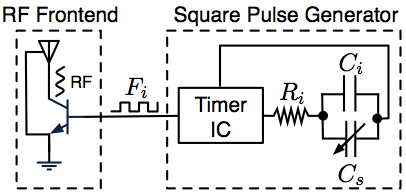
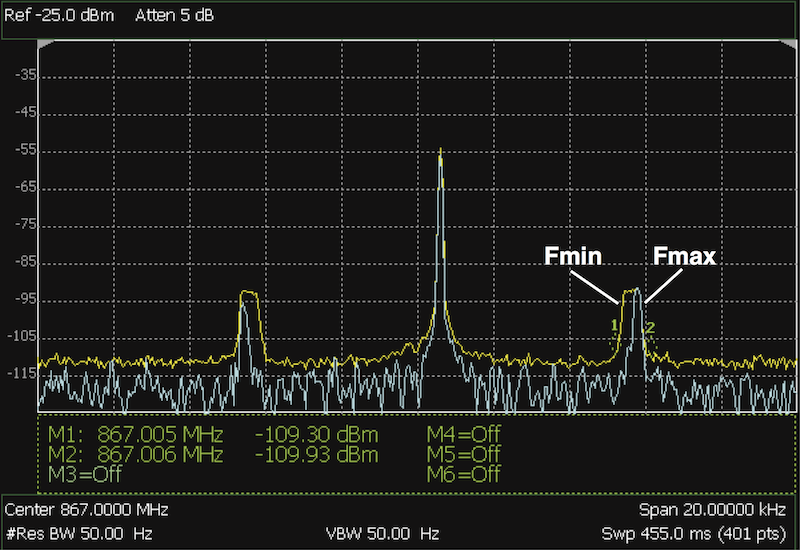
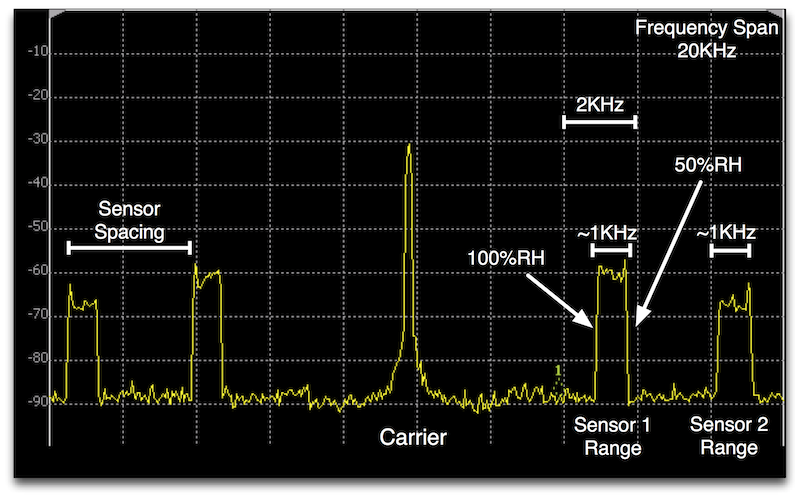
5. Indoor Audio GPS
The Indoor Audio GPS is a simple localization testbed using acoustic waves and the iCubes Wireless Sensor Network platform. The goal is to localize a moving vehicle indoors with low-cost communication hardware. The system consists of four parts: four ceiling (anchor) nodes, the vehicle to be localized, a coordinator node and a PC. The vehicle is a toy-car equipped with a microphone, an acoustic bandpass filter and a Silabs C8051f320 Development Kit, interfaced to a CC2500 radio module. Location is estimated with the use of convex optimization algorithms running on a PC. The provided testbed is designed with low-cost, custom audio ranging electronics, RF communication and easy-to-use, Matlab interface that allows quick experimentation with various localization algorithms.
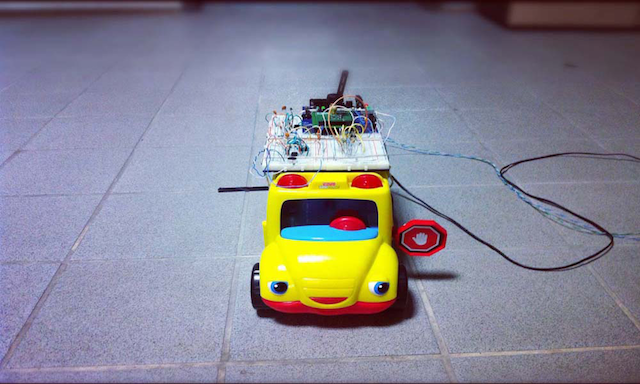
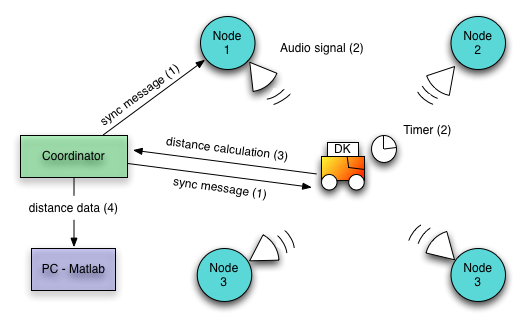
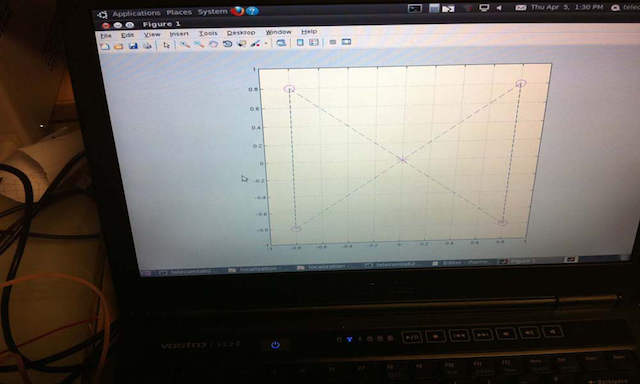
6. The ICubes Project
With Eleftherios Kampianakis, George Sklivanitis, Konstantinos Tountas, Panagiotis Markopoulos, and under the motivation and guidance of Associate Prof. Aggelos Bletsas, we developed from scratch low-cost, energy-efficient RF transceivers for Wireless Sensor Networks, called "The iCubes".
The wireless nodes consist of a SiLabs C8051F320 MCU, a TI/Chipcon CC2500 radio module, along with a battery holder and sensor connectors, placed on a Printed Circuit Board (PCB) designed by our group and soldered in-house. Routing protocols, sensor software interfaces and other applications have been developed. A multi-hop WSN on ECE department's roof garden has been tested, to evaluate the performance of iCubes in environmental applications.
The iCubes started as a term project of the "TEL404 Analysis & Design (Synthesis) of Telecom Modules" course during the Spring 2010 semester. Since then, the group has continued to develop node firmware and applications. Low-power custom humidity sensors have been also developed and interfaced to the iCubes.
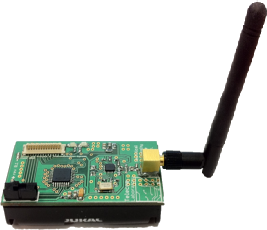
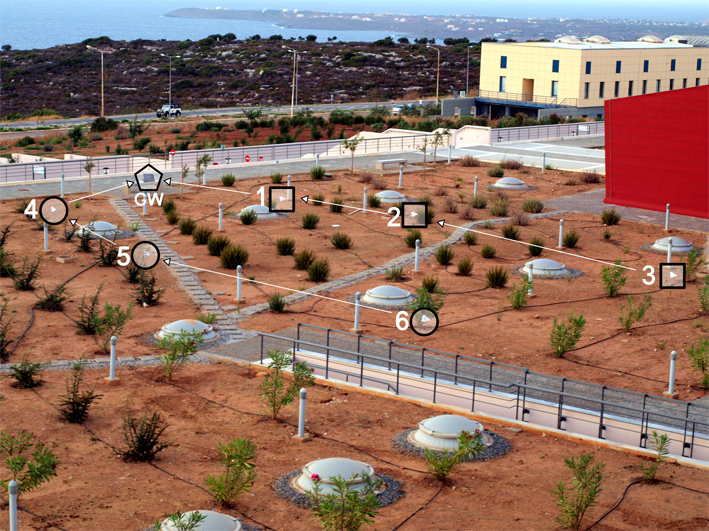
7. Sensor Integration to Interactive Virtual Environments
A networked sensing platform was constructed, that projects real-world measured values to an interactive 3D Model of the TUC-ECE Department building. The network nodes were Arduino boards with an Ethernet Shield attached. Measured data such as human activity (e.g. proximity to a location), or environmental conditions (e.g. amount of light) are transferred to a PC that dynamically renders the 3D Model, taking into account the reported sensing data. This project was part of the Diploma Thesis of Stefan Petrovski.
